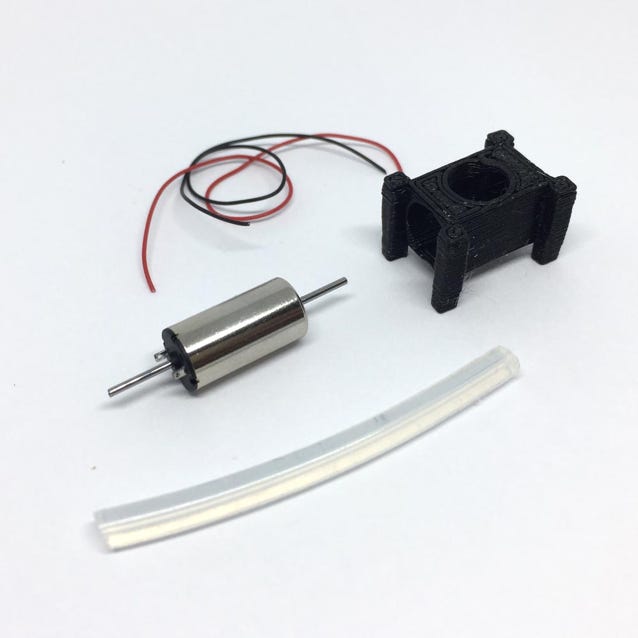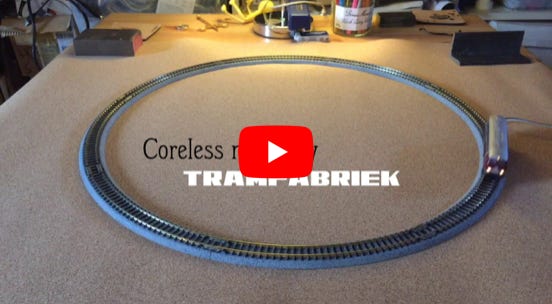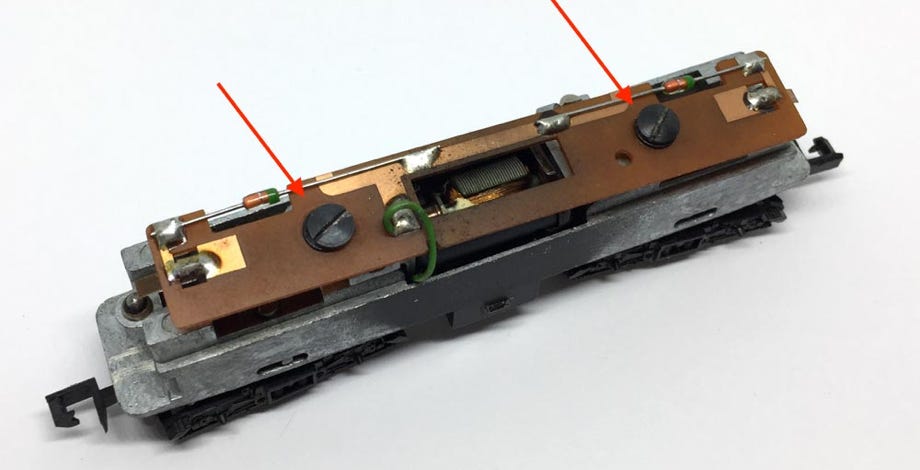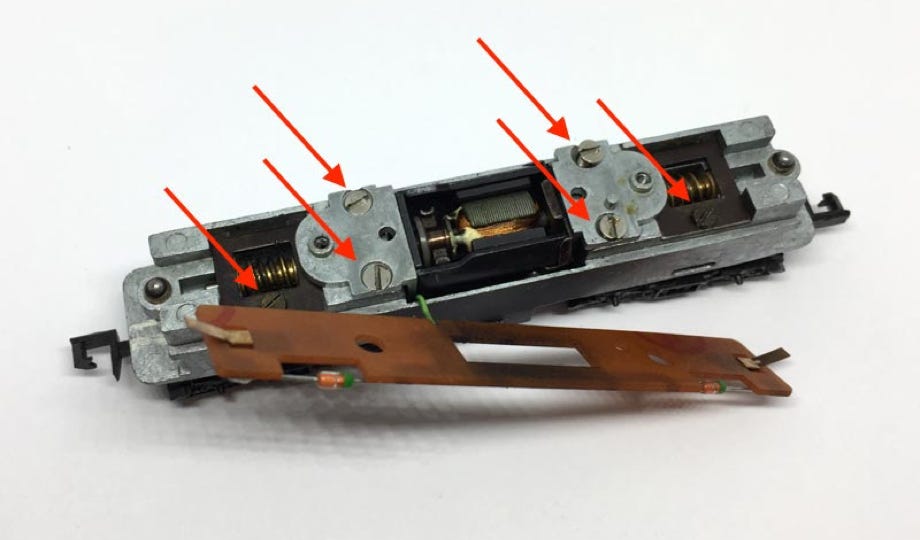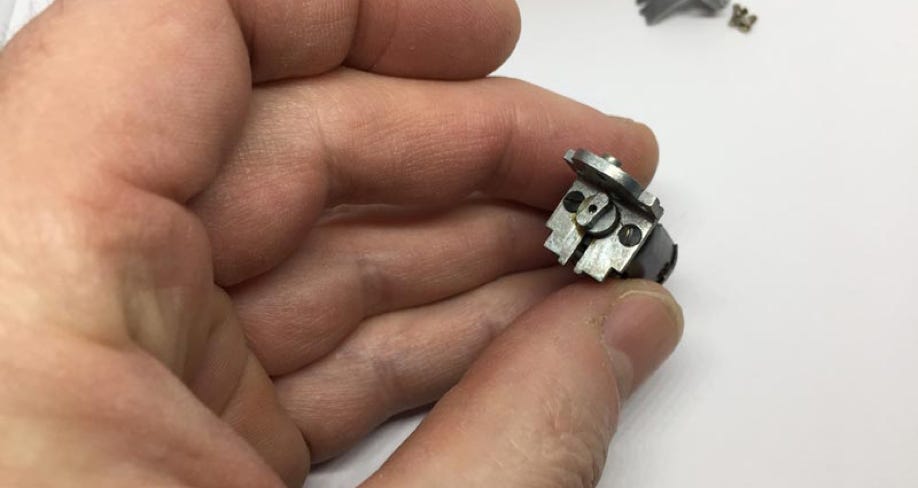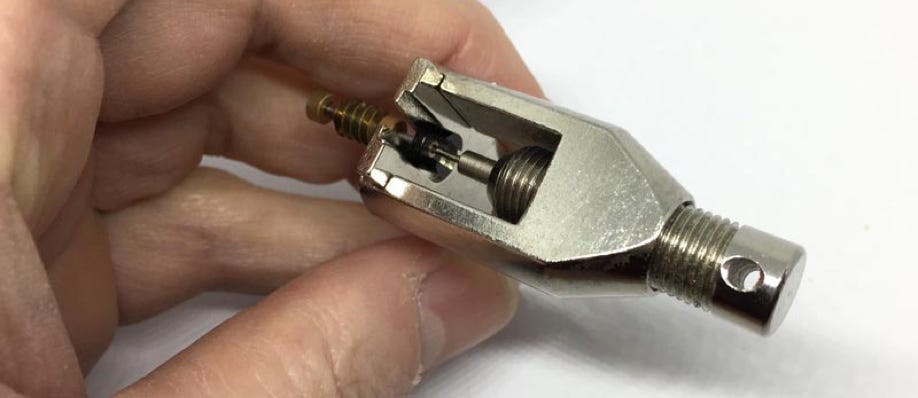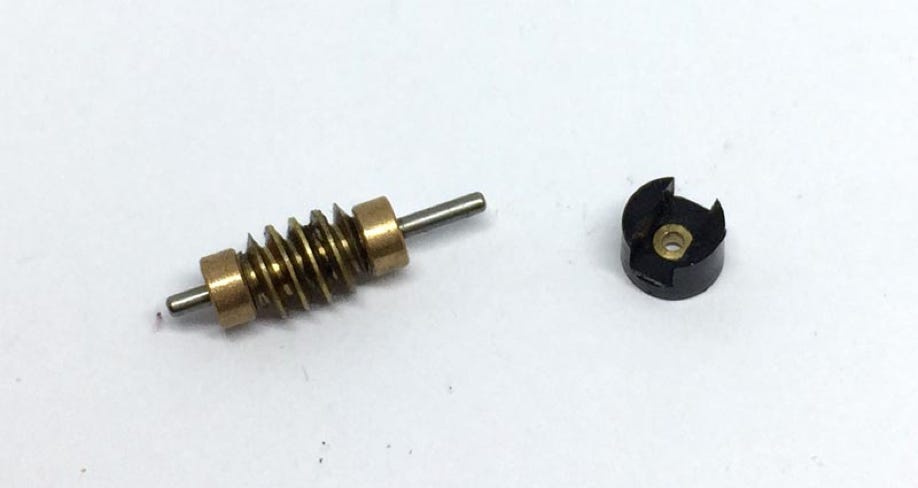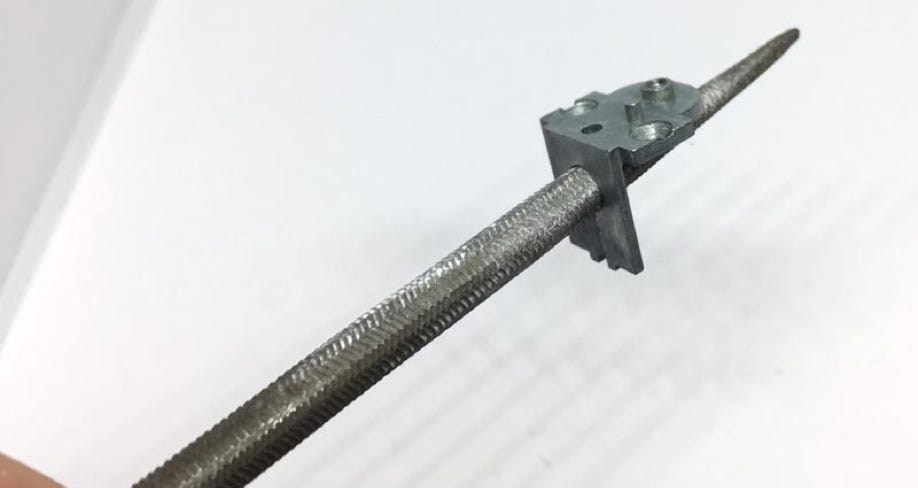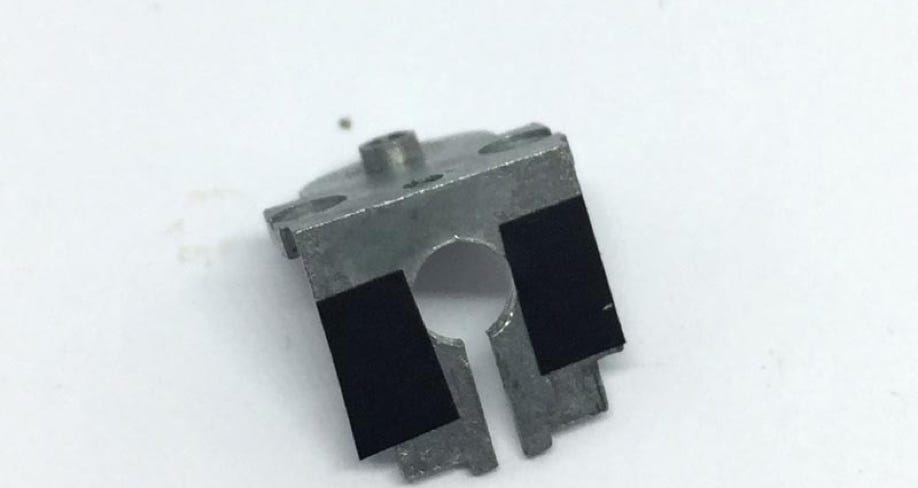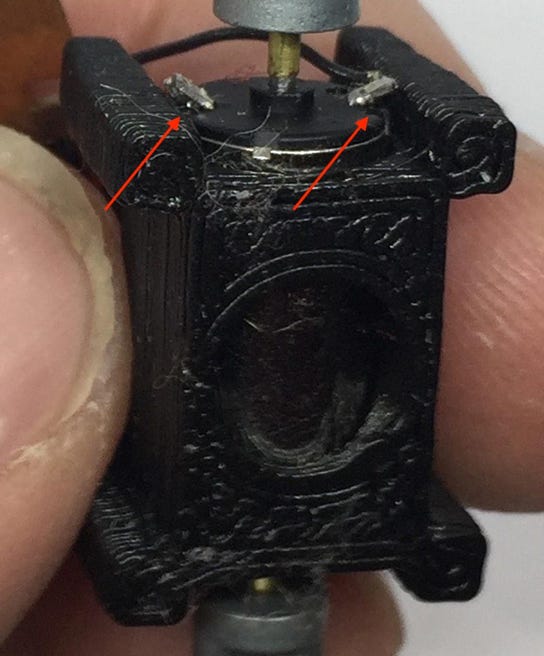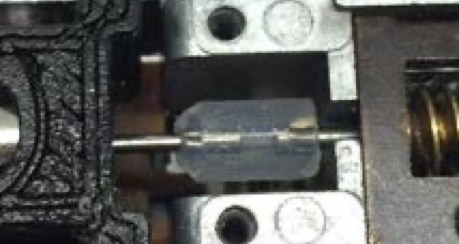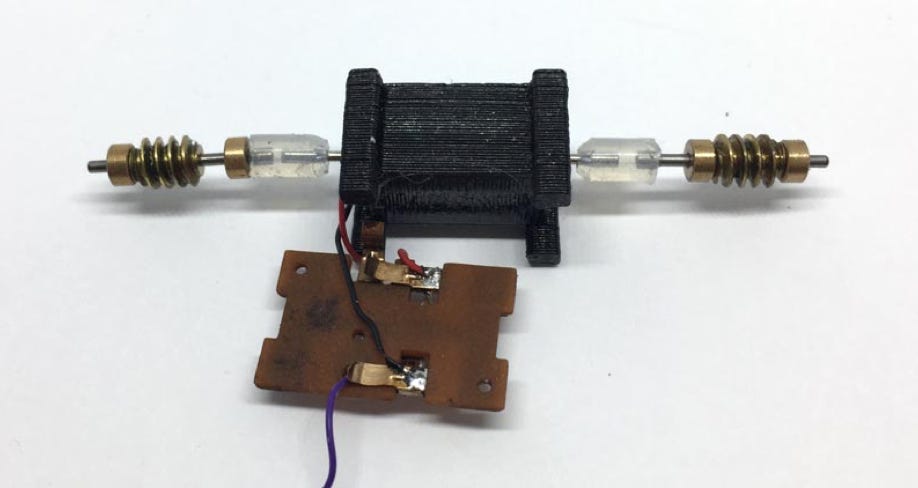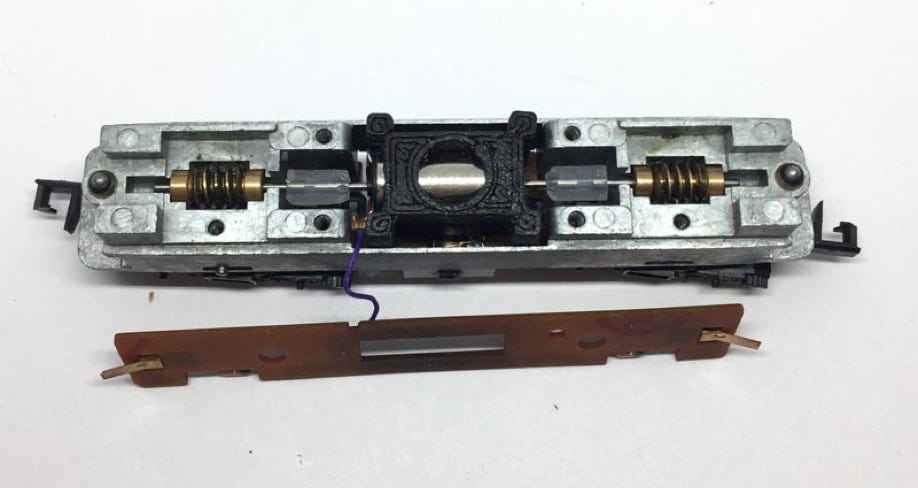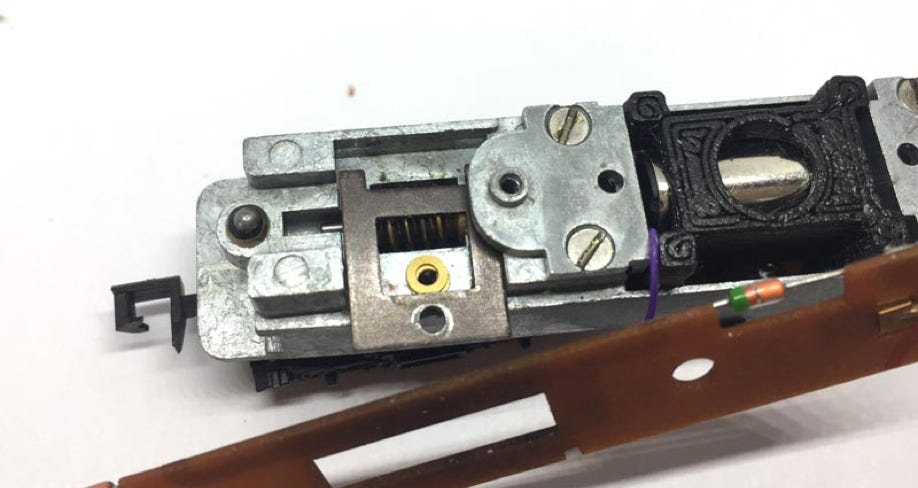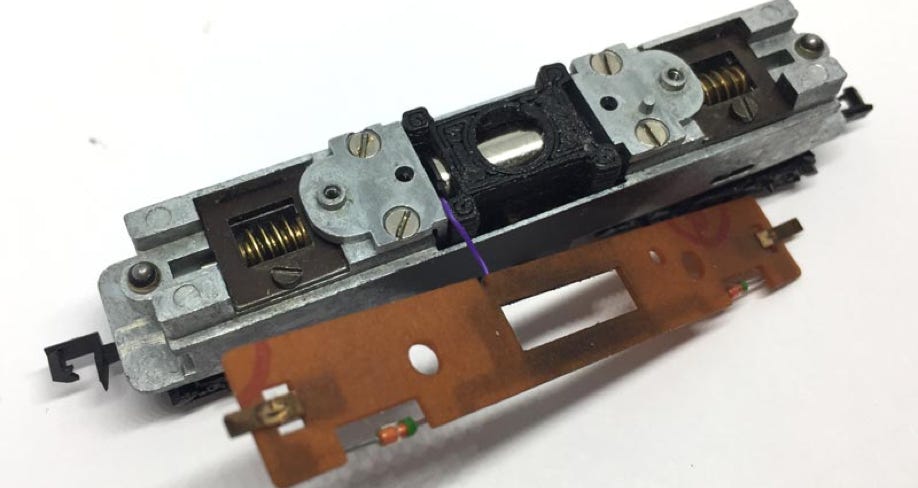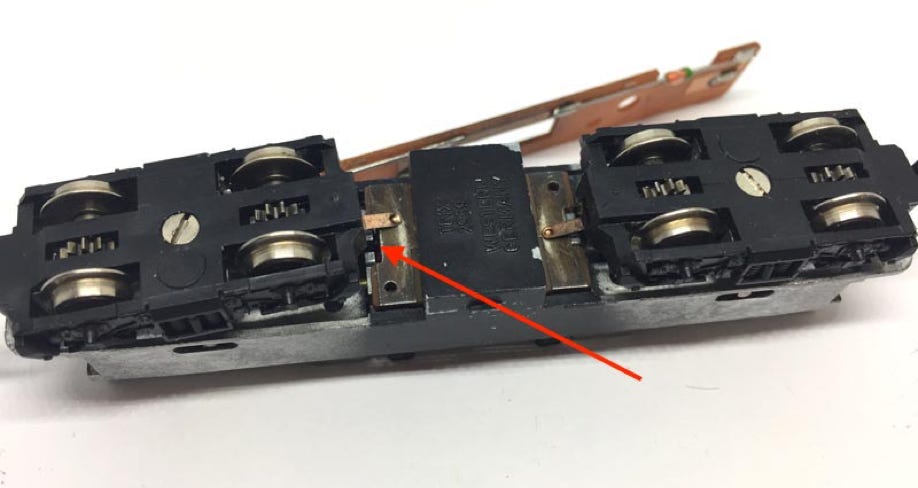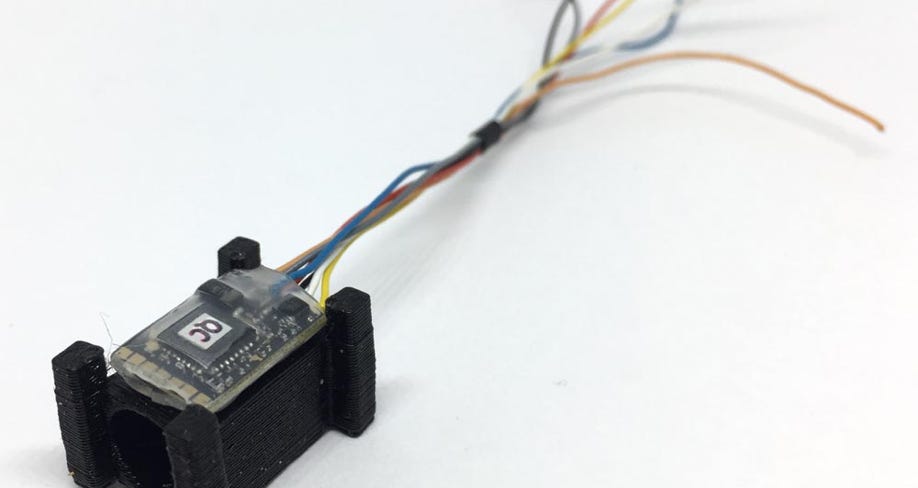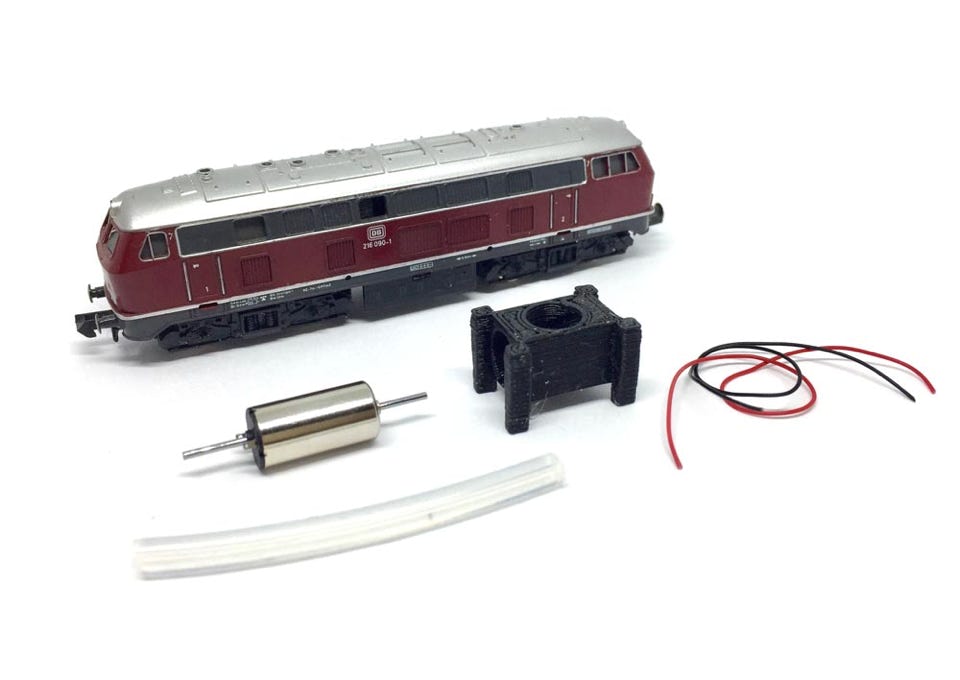


UK based
Prices for UK customers are shown inc 20% VAT
Other countries, inc EU, prices shown are ex VAT.
Conversion Minitrix BR216 V160
to 12V coreless motor
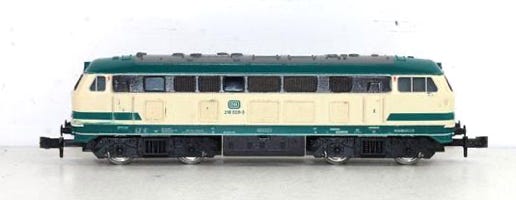
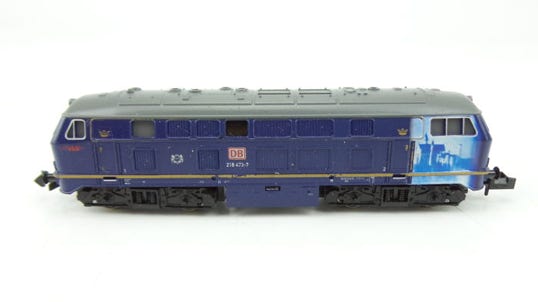
Fits all Minitrix art. 2959, 12873, 12952, 12953, 12501 (Years 1986-2002). Will even be suitable to similar designed Minitrix locomotives (compare inside of your model with the pictures).
What you need for conversion set
- The model and upgrade kit
- Small flat screwdriver
- Soldering iron 15W/25W
-Sharp pair of scissors or knife
Good to have:
- Gear puller (get a brilliant one here)
(though plastic worms pull off quite easily by hand)
Installation time: Around 1 hour
